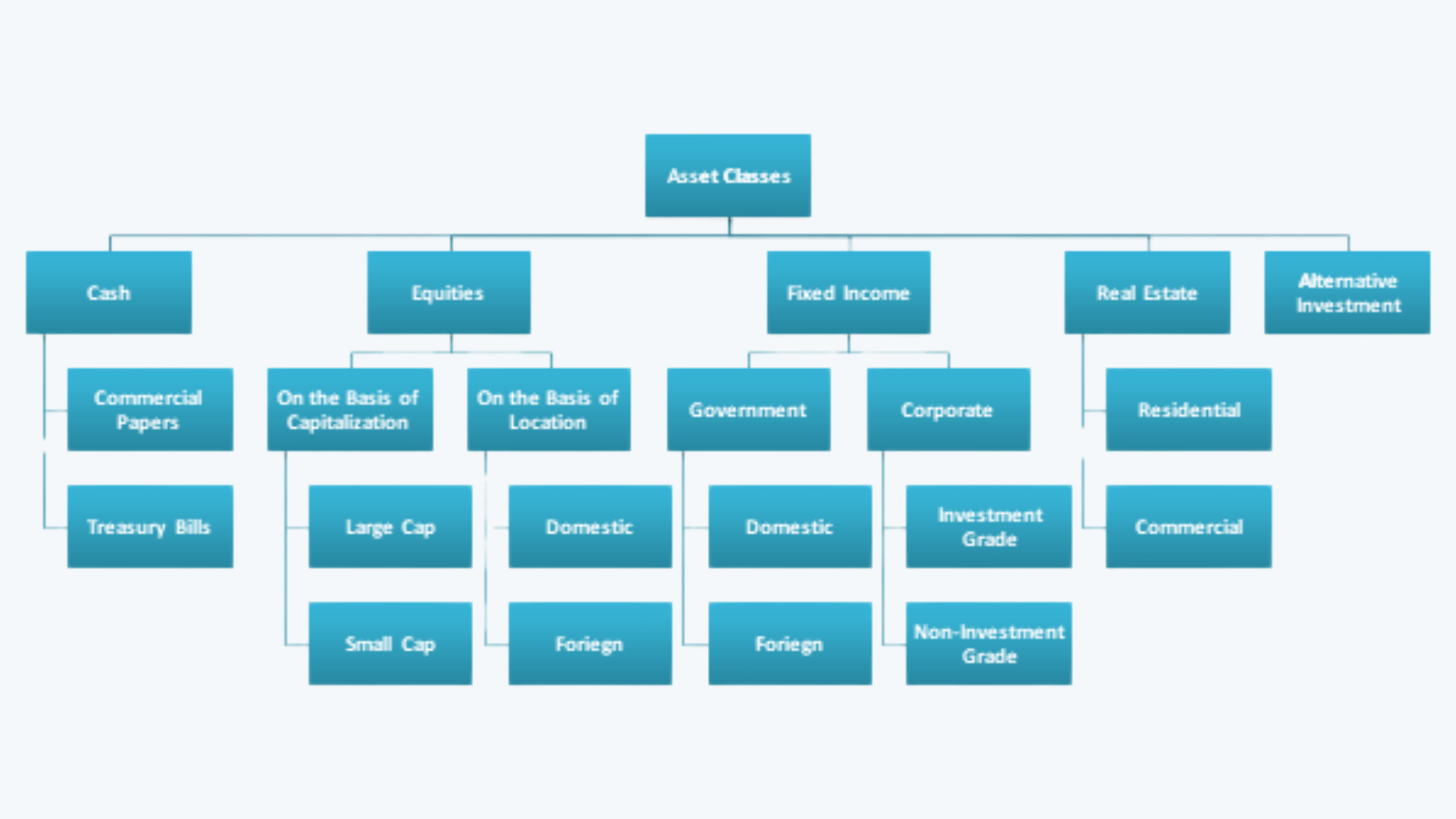LOS F and G require us to:
f. explain the specification of asset classes in relation to asset allocation
g. describe the principles of portfolio construction and the role of asset allocation in relation to the IPS
1. Strategic Asset Allocation
a. Strategic asset allocation is the percentage allocated to each asset class in order to achieve the client’s objectives.
b. The asset class is the category of assets that have similar characteristics and risk-return relationships.
c. Allocation across the asset classes tends to be the primary driver of returns, i.e. exposure to the systematic risk factors that drive the class. That is, being at the right asset class at the right time, in line with the market expectations, helps in maximizing the returns.
2. Asset Classes
There are different classes of assets. Some of them could be classified as follows:

a. All the major classes of assets such as cash, equity, fixed income, real estate, alternative investments, etc. are mutually exclusive and exhaustive.
b. Investments made across the asset classes provide diversification benefits, especially if there is a low correlation between the two assets, especially if there is a low correlation between assets.
c. Within the assets belonging to the same sub-class, there is a huge similarity between the expected return and the variance, and there is also a high correlation.
3. Steps in Portfolio Construction
The process of portfolio construction consists of the following steps:

a. While doing the risk budgeting, the managers may choose to follow either an active or passive approach.
b. But, for the tactical asset allocation and security selection, the managers must follow the core-satellite approach of active management.